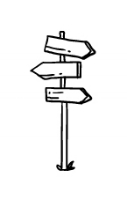2020 has been a record year for the gap year as more students than ever before weighed the option of a virtual freshmen year or limited on-campus interaction with a COVID-style gap year. I consulted with more families than ever before from March - September. While not everyone decided that a gap year was the right choice for them, every one of the gap year students I ended up working with has declared that a gap year was the right choice. This fall I have had students participate in virtual gap year programs, in-person structured domestic gap year programs, as well as, DIY or “recipe” gappers who worked on electoral campaigns, worked to earn money, took a class, or volunteered close to home.
Virtual Gap Programs
A virtual gap year program at first seemed antithetical to the entire notion of a gap year, which has traditionally focused on experiential learning. However, program providers have developed some rich and engaging virtual options. These new virtual gap year programs offer students the opportunity to: participate in cultural exchange, language learning, and volunteer placement(s) with US-based non-profit(s); take part in workshops focusing on discerning one’s own values, goal setting, & developing creativity & confidence; hear from inspirational global change-makers, develop leadership abilities through a facilitated course, and form friendships with gap year students from around the world.
Learning to build community is one of the key takeaways I hope for students in their gap year experience, and one many of us have been desperately craving since the pandemic began. I’ve been impressed and inspired by student’s abilities to connect with peers in meaningful ways through virtual programs. One of my clients has taken part in book clubs, volunteered as an English teacher (virtually), and organized a virtual Halloween party with her cohort of gap year peers.
Many virtual gap year options are part-time, so students can combine a virtual program with other experiences, such as part-time work, volunteering, or an internship. A virtual gap program offers both social connection with other gap year peers, as well as, necessary structure and support from program mentors. Students can build around the virtual gap program to fill the remainder of their gap time with in-person experiences that align with their overall gap year goals.
While a virtual gap year program might not be the right fit for every student, they are an affordable, flexible option for students seeking connection and support during their gap time.
Domestic Gap Programs
Traditionally I’ve had very few students interested in a domestic gap experience, (despite my repeating how many WONDERFUL places there are to explore right here in the United States). As we all know, 2020 is not a traditional year. In addition to new virtual gap options, I’ve also seen many trusted providers pivot their focus to offer more domestic options, or offer domestic programming for the first time. Several providers that previously served only high school or college students developed gap programs to meet the increased demand for in-person alternatives to virtual college classes. It has been a busy season learning about all of these new and exciting gap year options!
In-person domestic experiences range from: residence based programs where students live together in a small pod and learn about a specific theme through hands-on experiences (ie. sustainable agriculture in NC or climate justice in OR); programs that involve some wilderness exploration while also focusing on topics such as culture and society along the Southern border or sustainability in Colorado or Hawaii; programs that are primarily wilderness based and focus on developing technical skills, such as, rock climbing, skiing, or backcountry backpacking; as well as, programs that are more travel focused and wilderness-lite where groups explores a region of the U.S. on a road trip visiting National Parks, having adventures with peers while supported by program leaders and developing new skills such as SCUBA certification and campfire cooking.
Many of these new domestic gap options involve some degree of wilderness experience. Some students hesitate at first when presented with a program that involves camping. I encourage students who are interested in the varied themes of a wilderness-lite gap program and committed to having an in-person experience to give it a go. The majority of 18 year olds have not spent much, if any, time in the backcountry, and providers don’t expect students to be wilderness experts. An open mind, a willingness to try new things, and occasionally get out of your comfort zone are the key prerequisites. Both while leading gap year programs overseas, as well as, this semester with my consulting clients I have heard multiple accounts from students who had never camped before, but now, as a result of their gap experience, plan to seek out more camping and wilderness experiences in the future.
Students returning from domestic in-person programs this fall report similar impacts to what I usually hear from students who travel abroad. Students had incredible fun, were challenged, learned to improve their communication skills, increased their maturity & independence, and forged meaningful relationships with their group mates and program leaders. Students and program providers have already managed to turn a challenging year into a growth-filled adventure. I look forward to continuing to support students as we deal with the challenges and adventures early 2021 may bring.




